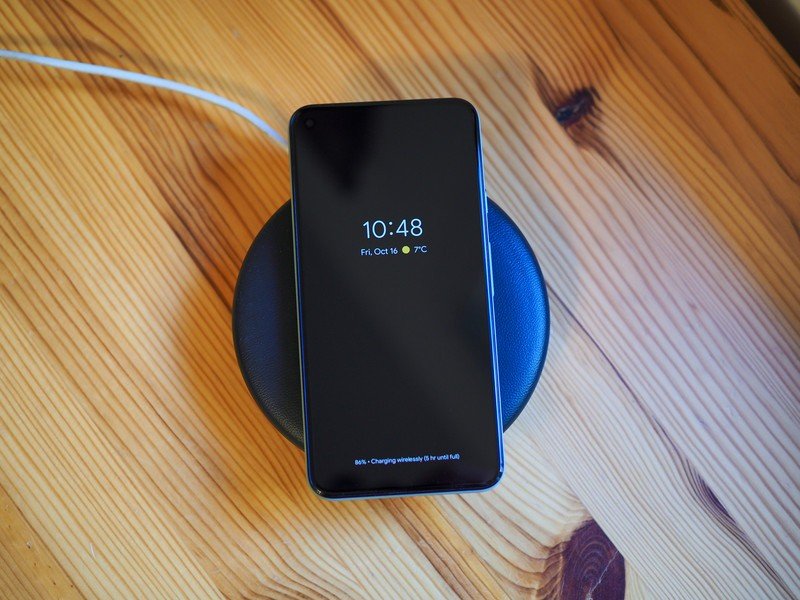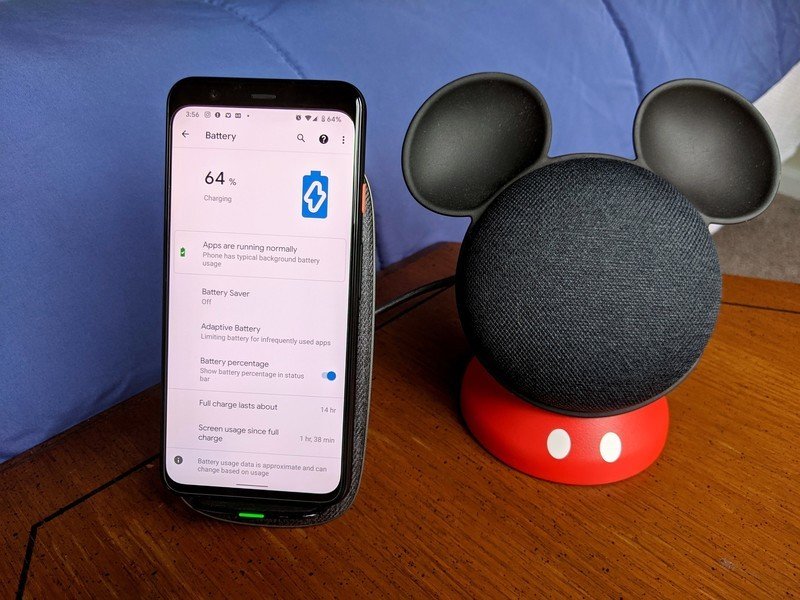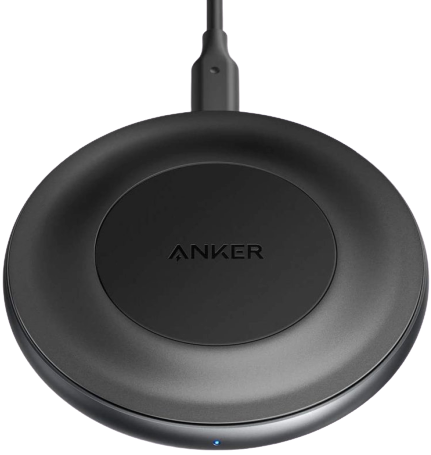Three rules for buying wireless chargers on Black Friday

We're getting close to Black Friday, and that means deals on absolutely everything, from home appliances and TVs to laptops, tablets, phones, and the accessories that make them all better. If you pick up a new phone this season, there's a good chance it'll support wireless charging, which has practically become mandatory in high-end devices over the years, so why not grab a great wireless charger while it's on sale, too?
Before you just jump on the cheapest deal you can find for some off-brand wireless charger, though, there are some things you should keep in mind to ensure you really get your money's worth.
Rule #1: Check the input.

Wireless chargers have to be powered somehow, and since we've mostly (thankfully) moved away from older, proprietary, fixed-length barrel plug AC adapters, that means you need to know what cable type your wireless charger uses and what wall charger you'll be plugging it into.
Basically all Android phones are USB-C Power Delivery these days, and in a perfect world, all wireless chargers would be, too, but that would make life way too easy. No, no, it's not Black Friday if you're not having to dig through pictures or reviews looking trying to see what input port a render shows.
Micro-USB-powered chargers are slowly fading away, but expect to see mountains of them dirt cheap on Black Friday because. If a wireless charger uses micro-USB, it for sure is powered by Qualcomm QuickCharge, and while QuickCharge 2.0/3.0 chargers are something that came with most phones 3-5 years ago, if you don't have any left, grab this 24W iClever Qualcomm QuickCharge 3.0 Fast Charger to ensure you get your top charging speed.
That said, just because a wireless charger uses USB-C doesn't automatically mean it uses Power Delivery: a lot of USB-C chargers still use Qualcomm Quick Charge. Some listings will tell you outright that they aren't supported for Power Delivery, while others you'll have to tell by looking at the compatibility chart image most listings have.
Basic 5V/2A chargers can at least power just about any Qi pad to give you the base 5W Qi charging, but for fast wireless charging, it'll usually tell you what type of charger it needs. If you find a deal on a wireless charger with USB-C Power Delivery, that's a winner.
Get the latest news from Android Central, your trusted companion in the world of Android
Rule #2: Look beyond the title speed.

10W and 15W Qi wireless charging is not the same for all phones. You'll notice a lot of wireless charger listing say they're 7.5W for iPhone, 10W for Samsung, and that's because these companies use different wireless charging profiles beyond the standard 5-10W Basic Power Profile (BPP) and 10-15W Extended Power Profile (EPP).
This means that just because a wireless charger says it's 15W doesn't mean it'll charge your shiny new S20 FE at 15W. Most wireless chargers have a compatibility chart that says who gets what speed, and these are the profiles you'll want to look for, depending on your phone:
- 15W EPP: This is the Qi Wireless Consortium's "Extended Power Profile" and it's a relatively open standard, though the list of phones using it right now is relatively small, including LG phones, the Google Pixel 5, and the OnePlus 8 Pro (when not using OnePlus's own charger for proprietary 30W wireless charging).
- 15W Samsung: This is technically Samsung Fast Charge Wireless 2.0, and we've yet to find any chargers outside Samsung's own 15W Wireless Charger Stand with it. It's also only used by the Note 10 series, Note 20 series, and S20 series at this time.
- MagSafe 12-15W: This is the new standard Apple debuted with the iPhone 12 line. It'll output 15W when powered by a USB-C Power Delivery charger that's 20W or higher, and output 12W when used with a 15-18W charger.
- 10W Qi: This is the standard 10W used by most devices. This can sometimes be using the EPP profile, sometimes it's BPP, and sometimes it's not the standard Qi because it's actually the Samsung profile instead.
- 10W Samsung: This is technically Samsung Fast Charge 1.0, and for a lot of wireless chargers, this is the 10W standard they mean when they say they're a 10W charger.
- 7.5W Apple: 7.5W is the charging speed used for older iPhones, and as such it's a charging speed offered on almost all wireless chargers.
- 5W Qi: This is the basic Qi profile that all Qi chargers should support. Even if you can't fast-charge your particular phone on a particular charger, you should always be able to get 5W charging if your device supports Qi charging.
If you have a new Samsung phone, your choices are to either buy the official 15W stand or buy a charger that supports Samsung's 10W charging profile. iPhone users will want to buy a MagSafe charger if they're upgrading to the iPhone 12 series, otherwise just about every charger will give you the 7.5 you need.
If you have a Pixel 4 or a Pixel 5, the spec you need to look for is EPP, which unfortunately isn't always listed in the spec sheet. If a charger that's not in our Best Pixel 5 wireless chargers roundup, you'll want to double check the charger's listing in the Qi Consortium Database. Search for the brand name and then look for a model number, though they're not always exact in this database. Once you find the right model, look for Extended Power Profile next to Power Profile, then look at the bottom and see what the maximum output is. It should be 10, 11, or 15 watts.
Rule #3: Know where you're using it.

It should go without saying that not all chargers are perfect for the same spaces or environments. If you want a wireless charge by the bedside, you probably don't want a ring of LED charging indicator lights keeping you awake at night. And if you're using it on a desk where you'll have to snake the cable through a tight corner or wire cubby, you'll want to avoid wireless chargers with permanently attached wall adapters.
Flat charging pads can fit in more places than vertical charging stands, but stands allow you to see and use your phone while it wirelessly charges. Multi-device wireless chargers are great for busy homes or for anyone having to keep track of a work phone and personal phone, but they need extra space and they often use a barrel plug AC adapter, so make sure the outlet is close to where you want your wireless charger.
Being mindful of where in your home or office you need a wireless charger can help you zero in on a wireless charger that's a good fit for your life and not just a good price for your wallet.
Don't be afraid to go third-party!

One last piece of advice: don't be afraid to branch out from first-party manufacturers like the company that makes your phone. Plenty of popular accessory makers like Anker, Aukey, Satechi, and RAVPower have great wireless charging options, and almost all of them are available at a discount during the Black Friday season. Keep an eye out for the best deals, and enjoy the freedom of a cable-free, tangle-free charging experience!

Hayato was a product reviewer and video editor for Android Central.


